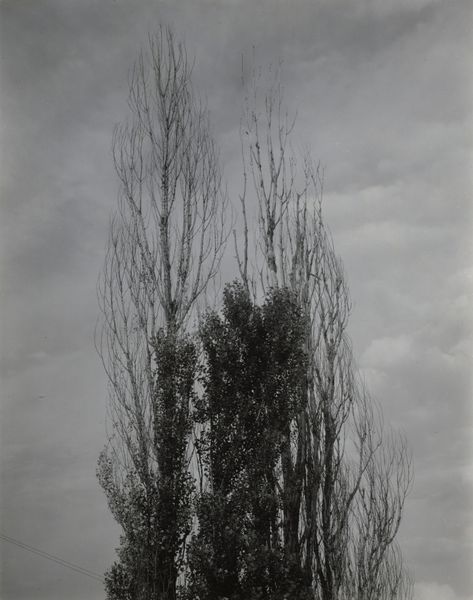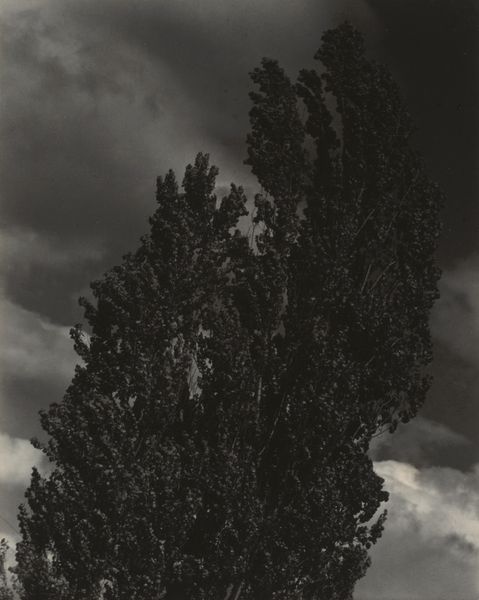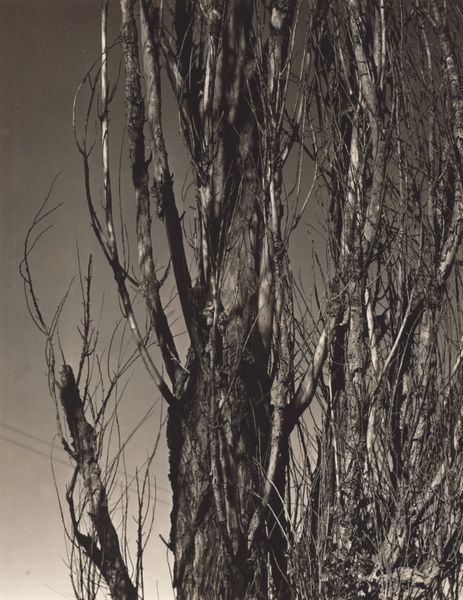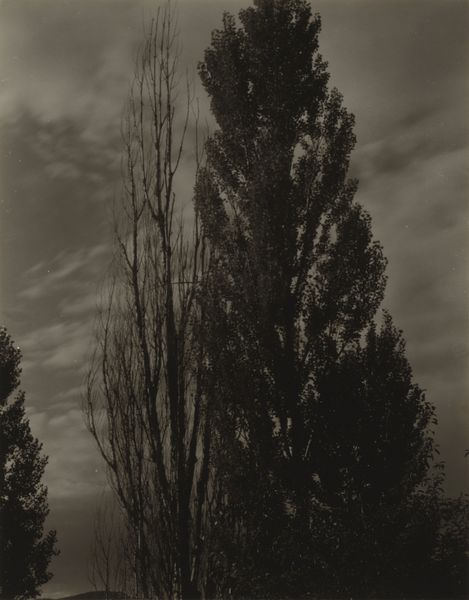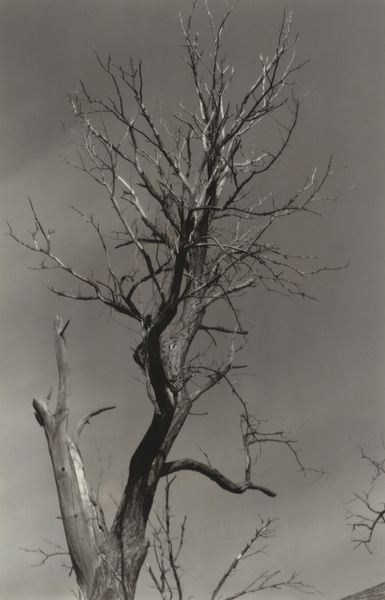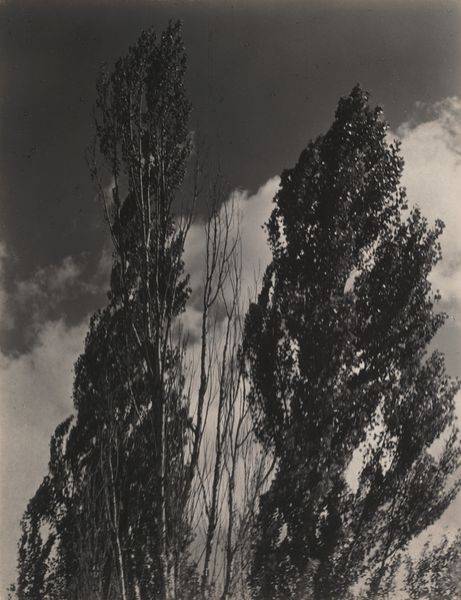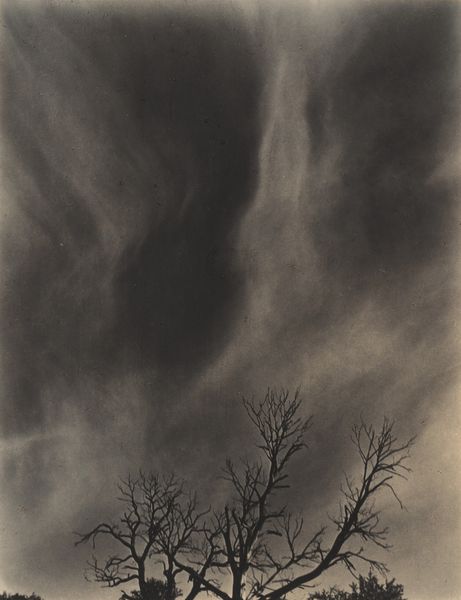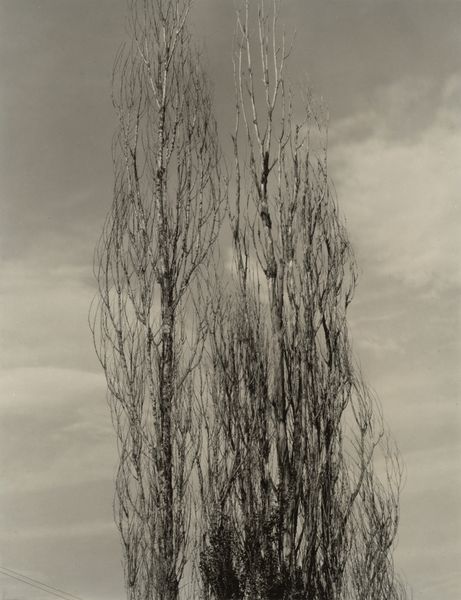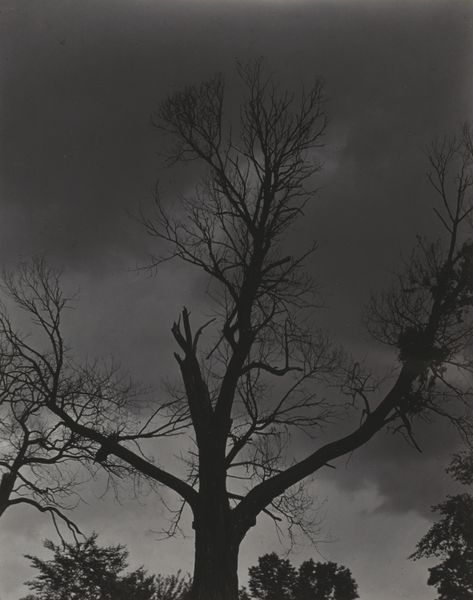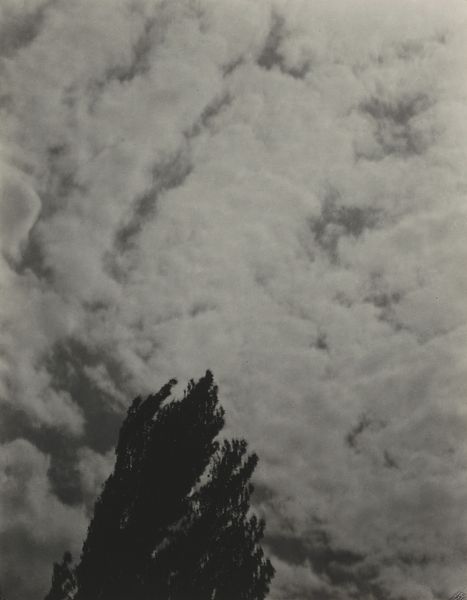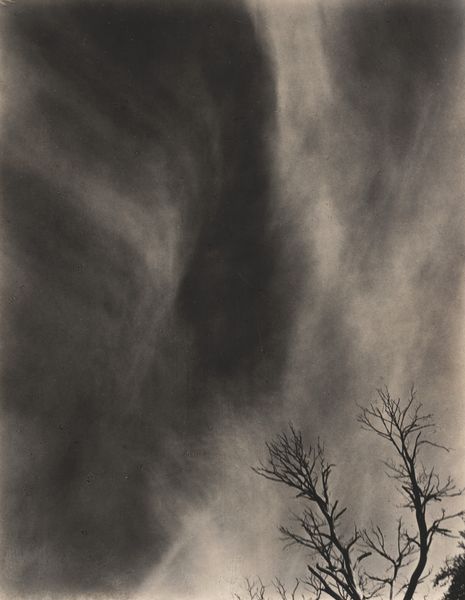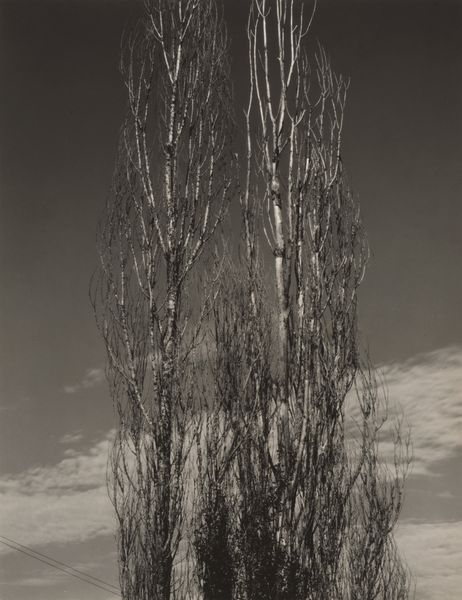
print, photography
#
pictorialism
# print
#
landscape
#
charcoal drawing
#
photography
#
line
#
symbolism
#
monochrome
Dimensions: image: 15.3 × 11.2 cm (6 × 4 7/16 in.) mount: 33 × 25.5 cm (13 × 10 1/16 in.)
Copyright: National Gallery of Art: CC0 1.0
Curator: This stark, almost melancholic photograph is titled "Topole," which translates to "Poplars," and was taken by Jan Bulhak in 1916. What's your initial response? Editor: It’s a powerfully bleak image. The stark monochrome emphasizes the bare branches reaching towards a heavy, indistinct sky. It’s unsettling, the way the trees dominate the composition. Curator: Indeed. Bulhak was a major figure in pictorialism, and this work really highlights that movement’s focus on artistic manipulation of the photographic process. Look at the textural quality—likely achieved through specific printing techniques—mimicking the effect of a charcoal drawing. Editor: That’s interesting, to think of photography consciously imitating other media. It brings to mind the symbolist movement and its preoccupation with mortality, especially given that skeletal silhouette. Considering 1916 as the historical context adds a chilling dimension. This was a period of immense loss and upheaval, reflecting the broader atmosphere of devastation brought on by WWI. Curator: Precisely. It is an intentional move on the artist’s side to address the consumption of nature. How it’s viewed, its natural function. Bulhak also established studios that were focused on producing postcards to address propaganda—showing destroyed cityscapes, etc. I find this fascinating, considering he didn't just print nature but also images of damaged infrastructure. Editor: So it begs the question—was it also manipulated towards his own activism, to demonstrate human suffering in Poland at the time? Curator: We can ask if the desolate quality of the trees is meant to be symbolic of the ravaged land of his home, a direct association of loss by the inhabitants. He knew his audience well and created with intent. It would have made sense he manipulated that image by using dark tonality—he could use it to highlight specific trees that will create that ominous sense of fear for the viewers. Editor: It provides so many interpretations depending on the viewer’s lens. The bare trees against the sky evoke not just sadness but also resilience—a holding onto something during the harsh period. It adds another emotional layer to what could be considered just a bleak, monochromatic picture. Curator: A nuanced interaction between nature and humanity, rendered visible through the hands of an artist deeply aware of his world and its challenges through production and dissemination. Editor: Leaving us with an artifact infused by memory and an urgent desire for transformation, deeply rooted in a particular context of production.
Comments
No comments
Be the first to comment and join the conversation on the ultimate creative platform.
